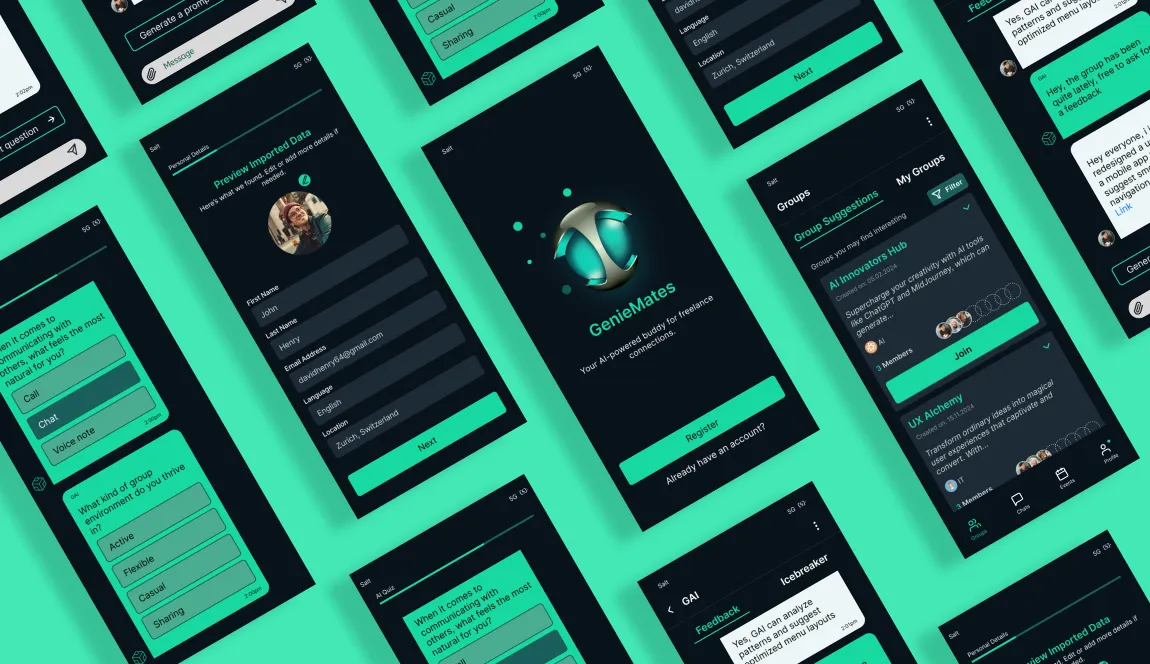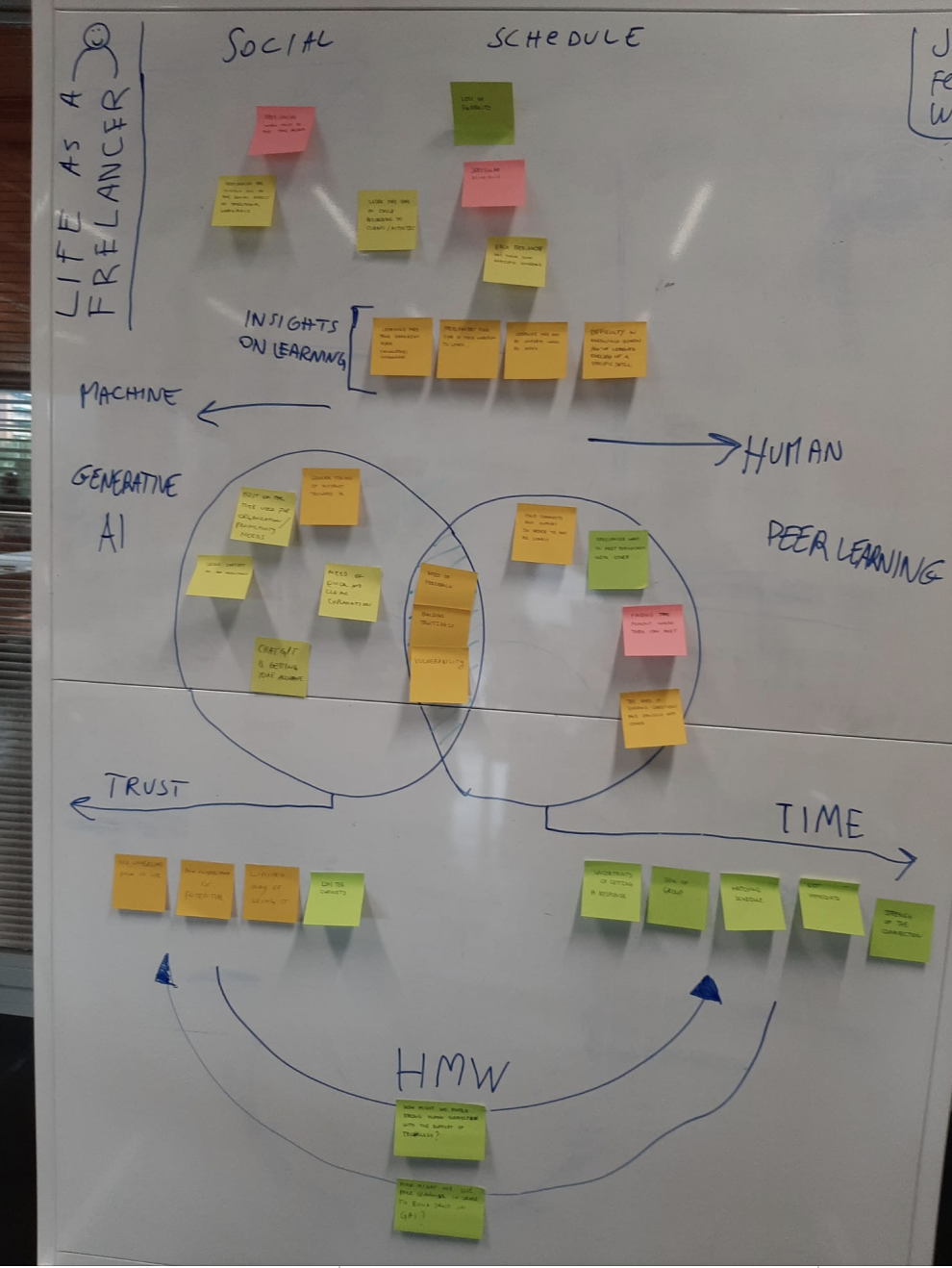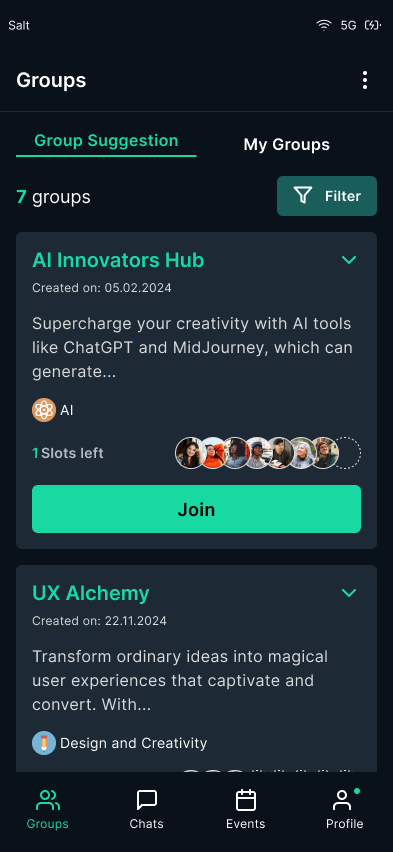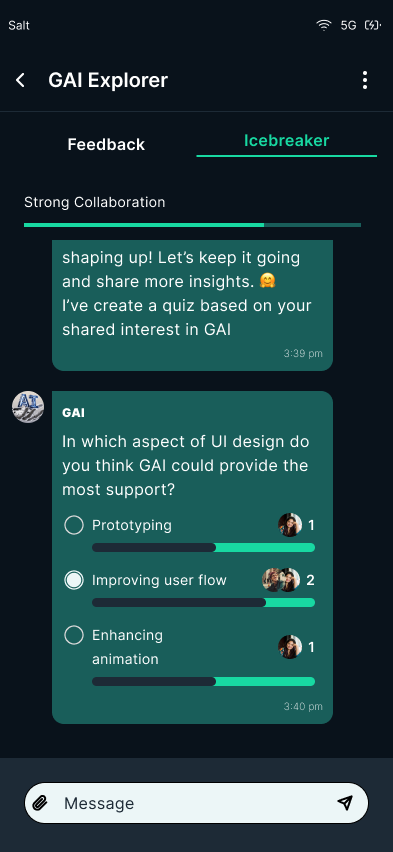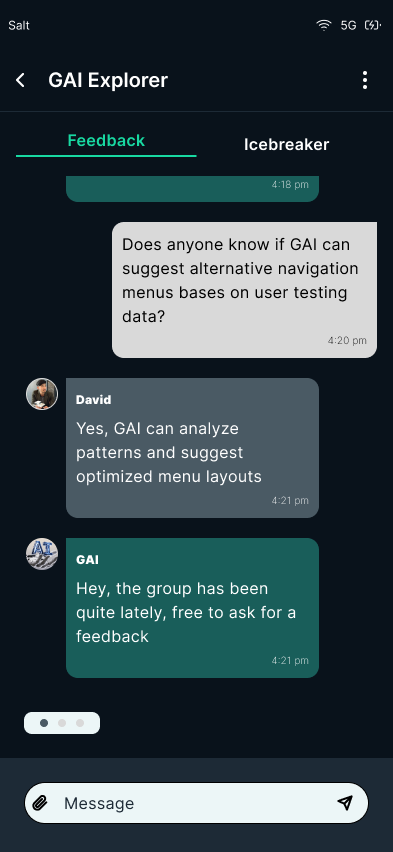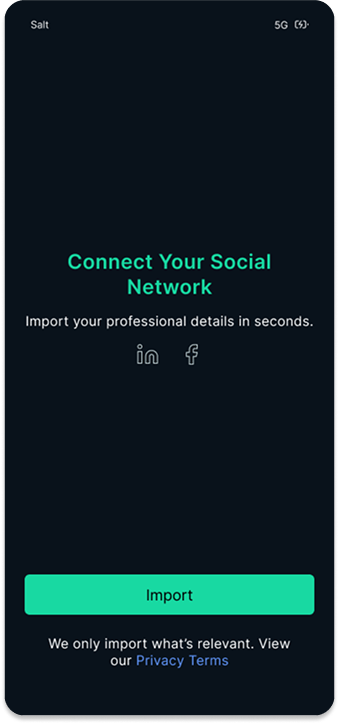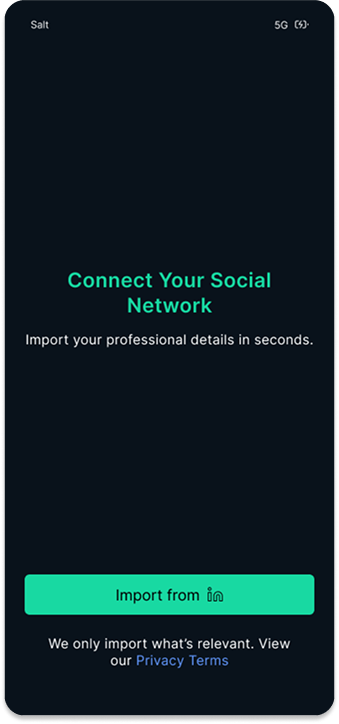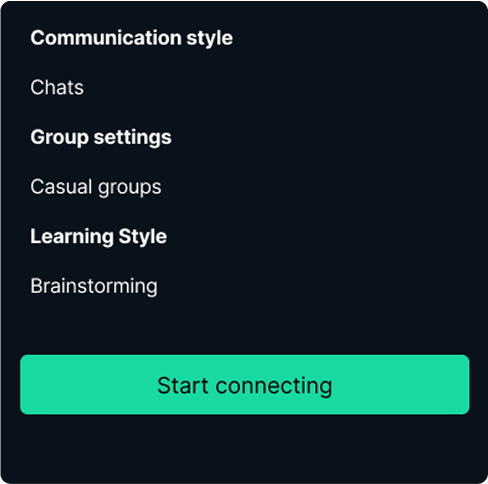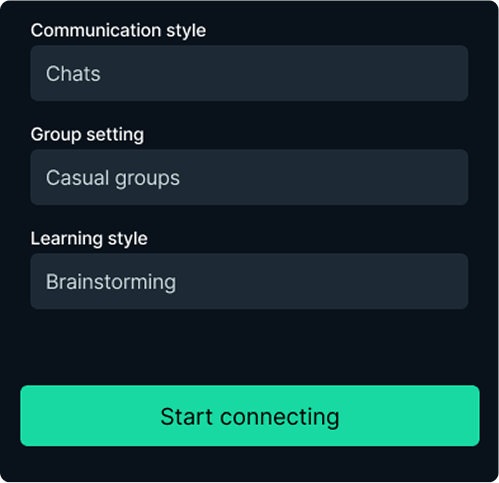Desk Research
Peer learning platforms analysis:
-
Huddelcraft
Small groups, mix of in-person and online, buddy, final showcase event
-
Focusmate
Having someone to do your tasks with and report to
-
Midjourney
Everyone work in one workspace, get inspiration, learn from what the other are doing
-
Lunchclub
Schedule weekly meeting online or in person with "unknown" peers
Main challenges in terms of scalability, quality control, and user engagement.
Key Insights
Many freelancers and solopreneurs encounter significant challenges when it comes to locating peer groups that can facilitate their learning and skill development. The nature of freelance work often leads to isolation, making it difficult to connect with others who share similar professional interests and aspirations. Traditional learning methods often lack flexibility and can involve lengthy, intense schedules. In contrast, peer learning significantly helps in achieving this learning objectives.

Experience Map
Learning a new skill involves a series of iterative steps. It begins with recognizing a limitation in a particular area of expertise. This leads to the discovery phase, where key questions emerge: "How can I learn this skill?", "Where can I find reputable courses?", and "How can I learn it as quickly as possible?"
-
Learning Phase
Once the right course is identified, the learning phase commences. This phase consists of two distinct yet iterative components: passive learning and active practice.
-
Feedback Phase
At each iteration, a feedback phase is essential. This feedback can come from various sources, such as tests, quizzes, or ideally, from real users who provide insights into your progress.
-
Integration & Maintenance
After achieving a solid level of confidence in the skill, it can be integrated into your work routine. However, it's important to continuously maintain and enhance this skill over time.

